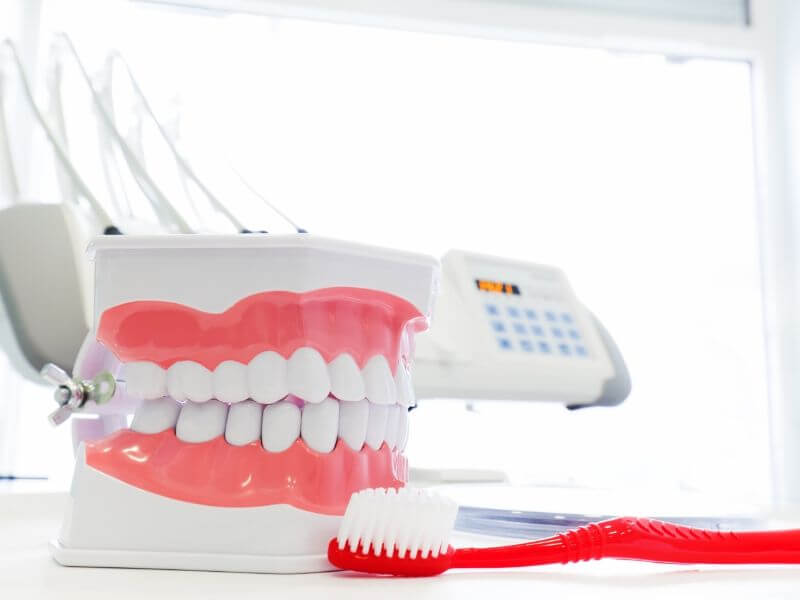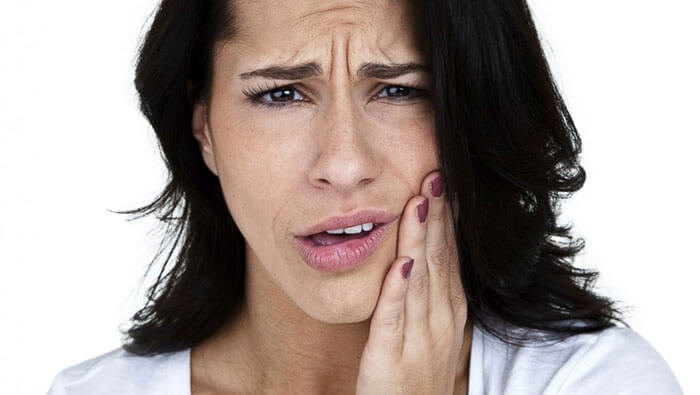While everyone talks about tooth pain, you are just as likely to experience pain from gums at some point in your life. Whether you are experiencing constant pain or pain when you eat and drink or brush and floss your teeth, the root of gum pain can have many causes. Knowing what factors or conditions may contribute to your gum pain can affect your treatment options. Here we will explore the various causes of gum pain and what treatment options are available.
Key Takeaways
- Gum pain causes: gum disease, canker sores, sinus infections, cuts/abrasions, and medical conditions/lifestyle choices.
- Good oral hygiene is key to prevent gum pain: brush and floss regularly.
- Treatment options depend on the cause of gum pain: canker sore treatment, sinusitis treatment, dental adjustments, and lifestyle changes.
- Home remedies for gum pain relief: anti-gingivitis mouthwashes, avoiding abrasive/spicy foods, nasal sprays/saline rinses, stress reduction.
- Regular dental visits and communication with doctor are important for addressing gum pain and identifying underlying causes.

What causes pain from gums?
While many assume gum pain and irritation is due to poor oral hygiene, that is only one possible cause. In many cases, the cause is out of your control. For example, changes in your hormones can contribute to gum pain. While proper oral hygiene helps to keep your mouth and gums healthy, you can’t always prevent or predict what is causing your gum pain and irritation. Some common causes of painful gums can include:
- Gum Disease (Gingivitis and Periodontitis) – Gingivitis is the early and mild form of gum disease. Painful gums are often the first sign that something is wrong. Plaque is the sticky substance that forms on your teeth. It is a combination of starches, sugars, and normal mouth bacteria. Tooth brushing and flossing is designed to remove plaque. Unfortunately, if not removed, plaque turns into tartar. This hardened plaque collects bacteria and causes irritation at the gumline. The longer this tartar remains on the teeth, the greater the risk of bacteria entering the gums and the teeth. If left untreated, the ongoing inflammation leads to periodontitis. This is a serious condition that can lead to the loss of teeth, tissue and even bone.
- Canker Sores – Painful ulcers, known as canker sores, can develop on the gums as a result of stress or injury. They can also be a symptom of an underlying condition, such as autoimmune conditions, nutritional deficiencies, and gastrointestinal diseases.
- Sinus Infections – In some cases, gum pain has nothing to do with your gums at all. Sinusitis, or a sinus infection, causes inflammation and swelling in the sinus cavity. Unfortunately, swelling and irritation puts pressure into the jaw and can lead to pain in the gums and teeth. If you are not experiencing red, swollen, or bleeding gums and have a history of sinus issues, your nose may be the cause.
- Abrasions and Cuts – Sometimes gum pain occurs due to simple cuts and abrasions in the gum. This can happen from something as simple as a popcorn kernel to more regular injuries and irritations from braces or other dental hardware.
- Underlying Medical Conditions, Medical Treatments, or Lifestyle Choices – Various medical conditions, such as autoimmune diseases like Sjogren’s or oral cancer, can affect the mouth and lead to gum irritation. Certain medications and treatments, such as calcium channel blockers or chemotherapy, can also contribute to gum irritation. Smoking, chewing tobacco and a poor diet are also contributing factors.

Relief and treatment for gum pain
How you treat your gum pain depends on the underlying causes. The best place to start is good oral hygiene. This means brushing your teeth at least twice a day and flossing at least once a day. It is important to focus on the area around the gumline. In some cases, an electric toothbrush can provide better cleaning and increased gum stimulation. Anti-gingivitis mouthwashes can also help to kill bacteria that remain after brushing and flossing.
But good oral care doesn’t end with brushing and flossing. You should also go in for regular dental visits, including cleanings, every six to 12 months. This allows your dentist to catch any potential problems before they contribute to gum pain.
Other treatment options focus on the cause of gum pain and addressing the underlying causes. These can include:
- Canker Sore Treatment and Prevention – If canker sores are causing painful gums, talk to your doctor about regular treatment options. If you are susceptible to canker sores, avoid abrasive, acidic or spicy foods that can contribute to their development.
- Sinusitis Treatment – For regular sinus inflammation, talk with your doctor about the use of nasal sprays, antihistamines, nasal steroids, or nasal saline rinses. If you develop a bacterial infection, antibiotics may be necessary. Treating sinus pressure is often enough to reduce or eliminate your gum pain.
- Adjustments to Dental Work – If you are experiencing cuts and abrasions to your gums from dental work or braces, speak with your dentist or orthodontist about possible adjustments. They can examine your dental appliances or braces and correct any abrasive areas or offer other options to reduce the risk of gum irritation and pain.
- Treatments for Underlying Conditions – For gum pain caused by certain medical conditions, treatment focuses on treating the condition. Let your doctor know you are experiencing gum pain and ask how it may be treated. If gum pain develops after you start a new medication, let your doctor know and he may be able to offer alternative medications.
- Changes to Lifestyle Choices – Eating healthy with a diet that includes vitamin C and calcium can help to minimize the risk of gum problems. Brush and floss your teeth daily and visit your dentist on a regular basis. Stop smoking or chewing tobacco. Engage in lifestyle changes, such as yoga, to help reduce your stress, which can also contribute to gum pain.
Tips to help you find gum pain relief at home
As you treat the underlying causes of gum pain, there are some tips that can help you find temporary pain relief. Brush your teeth with a soft-bristle toothbrush and avoid strong alcohol-based mouthwashes. Drink plenty of water to keep you hydrated and help to rinse bacteria away from the gums. A warm saltwater solution can also provide some relief while also helping to remove bacterial buildup. A warm compress can also be applied to your face to help lessen your gum pain until the irritation and swelling heal.
When to visit a dentist?
If you have addressed any potential underlying conditions and are still experiencing gum pain, contact Soundview Family Dental to make an appointment for a full exam. Dr. Kitts can check for possible signs of gingivitis or other possible dental concerns contributing to your pain.


